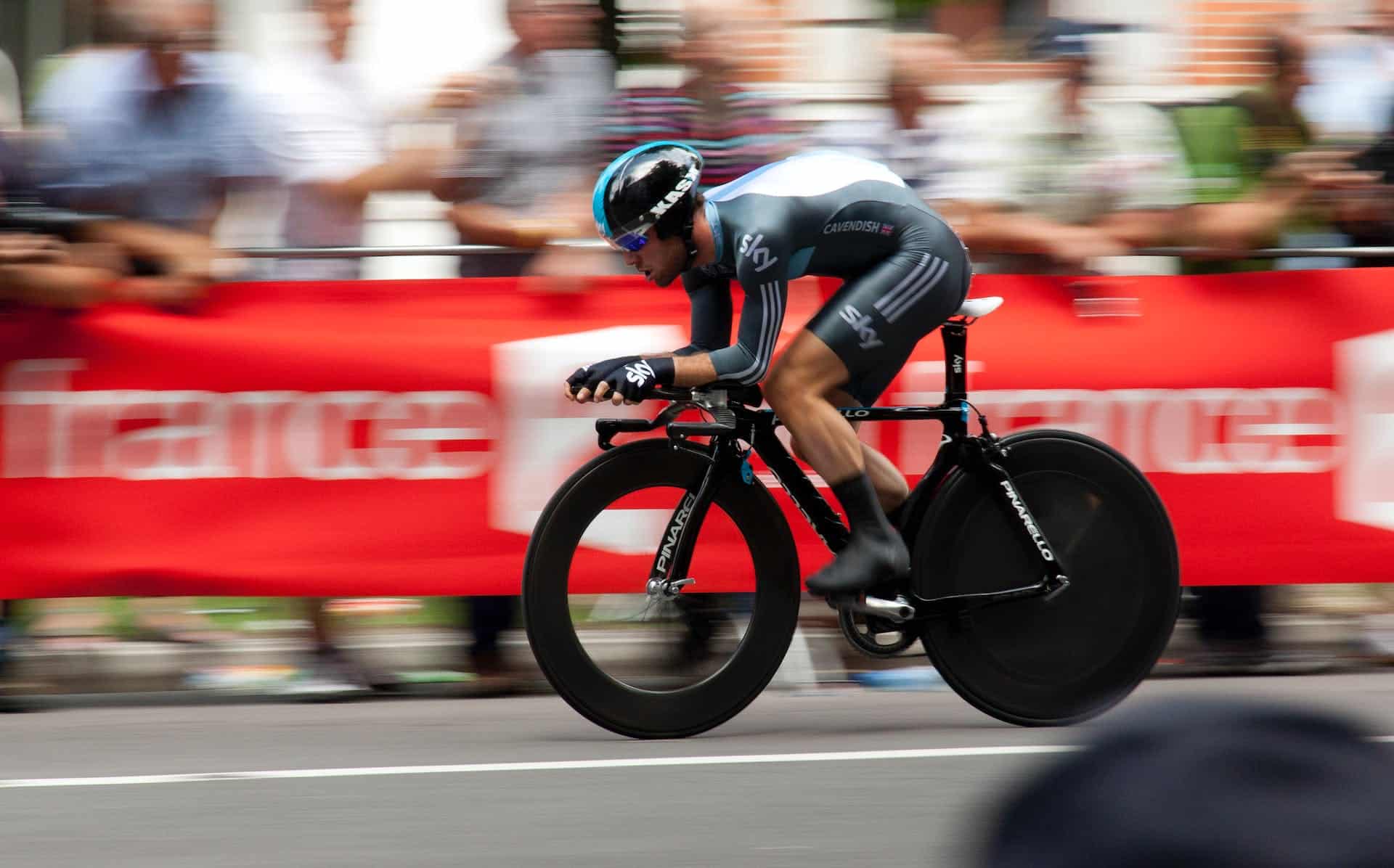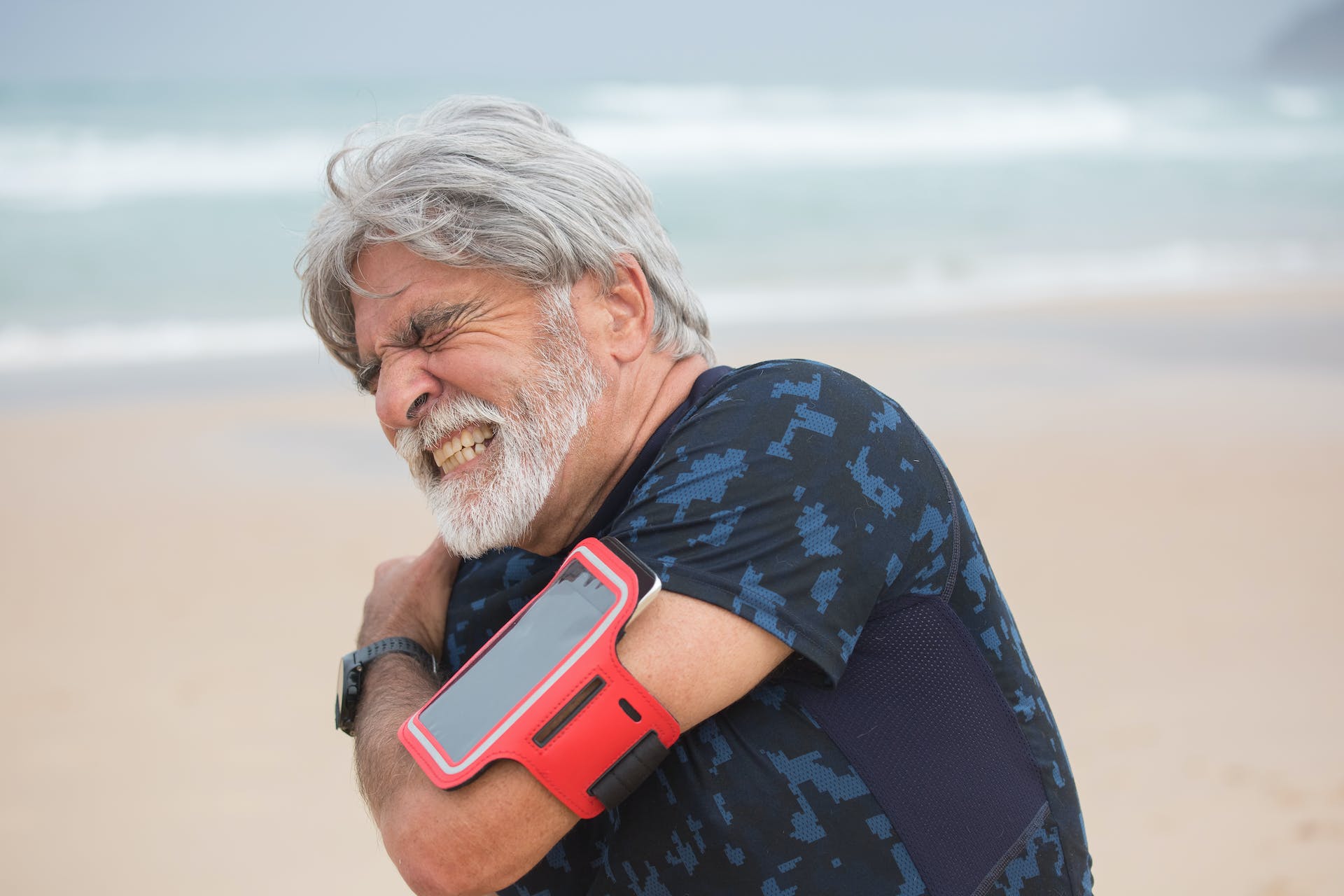Poor Circulation The Hidden Culprit is a common but often overlooked cause of chronic pain, fibromyalgia, neuropathy, and other conditions. A recent estimate suggests that 8 million Americans have peripheral artery disease (PAD). Poor circulation is a major causative agent and results from conditions such as diabetes, hypertension, and obesity. In this article, we will explore the link between poor circulation and chronic pain and discuss ways to improve circulation for better health outcomes.
The Importance of Proper Blood Circulation for Optimal Health
Proper blood circulation is crucial for overall health and well-being. The body’s ability to heal itself and maintain optimal functioning is compromised without proper blood circulation. We will explore the importance of proper blood circulation and its connection to chronic pain, fibromyalgia, neuropathy, the autonomic nervous system, and cellular oxygenation.
Causes and Symptoms of Poor Microcirculation | Poor Circulation The Hidden Culprit
When the capillaries and other tiny blood channels aren’t doing their job, we have poor microcirculation. Autonomic dysfunction, neuropathy, and persistent pain are only some of the consequences of this condition.
Common factors that lead to insufficient blood flow to the tissues are:
- Cigarette smoking.
- Insufficient physical activity, especially in the legs and feet, has been linked to impaired circulation [4].
- Poor circulation can be a symptom of diabetes.
- Hypertension.
- Poor blood flow, especially to the legs and feet, is a common symptom of peripheral artery disease.
- Varicose veins are a medical condition characterized by the appearance of enlarged, tortuous veins in the legs and feet.
Inadequate microcirculation may manifest as:
- Inadequate circulation can lead to a chill in the extremities, such as the hands and feet.
- Sensations of numbness or tingling in the hands and feet can result from decreased blood flow.
- Embolization: Fluid accumulation in the legs and feet is a common symptom of poor circulation.
- Pain in the legs, foot, and back can be caused by poor circulation and be classified as chronic.
- Low energy and exhaustion are also symptoms of poor circulation, which in turn can diminish the body’s oxygen supply.
The Immune System: White Blood Cell Sub-types and Its Functions
Leukocytes, or white blood cells, act as the body’s defense mechanism known as the immune system. Listed below are the types of white blood cells and their role in immunity:
- Most white blood cells are neutrophils, the most common kind. They assist the body in fighting off germs and other intruders by swallowing them whole and killing them.
- Lymphocytes aid in the immune system’s detection and elimination of foreign invaders. Lymphocytes can be broken down into two categories. While T cells assist in coordinating the immune response and directly target diseased cells, B cells create antibodies that detect and attach to specific infections.
- Monocytes scavenge the body for broken down or dead cells and other waste. In addition to aiding in infection prevention, they aid in defense by enveloping and killing off potential pathogens.
- Eosinophils aid in the fight against parasites and other pathogens. In addition, they have a role in allergic reactions.
- Basophils have a role in allergic reactions. They cause an increase in inflammation and other allergic symptoms by secreting histamine.
When it comes to the body’s defenses against various infections and foreign invaders, white blood cells play a crucial role.
Chronic Pain and Poor Circulation
Millions of people throughout the world deal with chronic pain on a daily basis. It’s defined as pain that lasts longer than three months and can have a major effect on a person’s standard of living. In addition, research has shown that poor circulation often contributes to chronic pain.
Studies have found that people with chronic pain have reduced blood flow and oxygenation to affected areas, leading to inflammation and tissue damage. For example, one study by researchers at the University of Michigan found that people with chronic pain had reduced blood flow to their brain’s thalamus, which is responsible for processing pain signals. This reduced blood flow can increase pain sensitivity and make it more difficult for the body to manage pain effectively [3].
Fibromyalgia and Poor Circulation
Over 5 million people in the United States have fibromyalgia, a disorder that causes widespread, persistent discomfort. Pain, exhaustion, and tenderness in muscles and joints are classic symptoms. In addition, research has shown that people with fibromyalgia often have reduced blood flow to affected areas, which can contribute to the development of the condition.
In a recent study, researchers suggested that people with fibromyalgia had reduced blood flow to their hands compared to healthy individuals. Moreover, this reduced blood flow may contribute to the cold and numb sensations that people with fibromyalgia often experience in their extremities.
Neuropathy and Poor Circulation | Poor Circulation The Hidden Culprit
Neuropathy is a condition that affects the nerves and can cause tingling, numbness, and pain in the hands and feet. Research has shown that poor circulation can contribute to the development of neuropathy. Diabetic neuropathy reduces foot blood flow, according to a Journal of Diabetes and its Complications study. The researchers suggested that this reduced blood flow may contribute to the nerve damage characteristic of neuropathy [2].
The Role of the Autonomic Nervous System
The autonomic nervous system controls blood flow and circulation. The sympathetic nervous system, which controls the “fight or flight” response, can cause vasoconstriction, reducing blood flow. The “rest and digest” response of the parasympathetic nervous system improves blood flow and relaxation.
Stress and anxiety can cause the sympathetic nervous system to become overactive, leading to poor circulation and chronic pain. Relaxation and parasympathetic nervous system activation, achieved through practices like meditation, yoga, and prayer, can boost circulation and alleviate the symptoms of poor circulation.
Apart from that, the results of a recent study suggested that people with autonomic dysfunction had reduced blood flow to their legs compared to healthy individuals. The reduced blood flow may also contribute to the development of peripheral artery disease. This condition affects the blood vessels that supply blood to the legs and feet [1].
Understanding the Perfusion Index
Peripheral perfusion, or blood flow to the body’s tissues, can be measured non-invasively with the help of a metric called the perfusion index. It is expressed as a percentage and is determined by comparing the pulsatile blood flow with the non-pulsatile blood flow.
In a recent study published in the Annals of the Romanian Society for Cell Biology, researchers aimed to investigate the effectiveness of transdermal carbon dioxide (CO2) in increasing perfusion index in patients with placenta accreta undergoing temporary abdominal aortic cross-clamping. Serious maternal morbidity and mortality can result from placenta accreta, a pregnancy complication. The study, which included 20 participants, shows that transdermal CO2 is effective in enhancing perfusion in those affected by placenta accreta [20].
The findings further emphasize the significance of perfusion in preserving tissue health. Chronic pain, fibromyalgia, and neuropathy are just a few of the disorders that can develop from inadequate blood flow. Increasing perfusion is a proven method for treating these ailments and improving health as a whole.
Transdermal CO2 – A Promising Technology for Improving Perfusion
A customized device is used in transdermal CO2 therapy to supply CO2 to the skin’s surface in a non-invasive manner. The increased perfusion and accelerated healing are the results of the CO2 being absorbed through the skin and into the bloodstream. Many medical issues, such as chronic pain, wound healing, and skin rejuvenation, have benefited from the application of this technique.
Patients with placenta accreta receiving temporary abdominal aortic cross-clamping may benefit from transdermal CO2 therapy, according to the study’s findings. Patients reported no negative reactions to the treatment. The results of this study may have major ramifications for the management of placenta accreta and other disorders where enhanced perfusion is necessary [20].
Transdermal CO2 therapy is a non-invasive, low-risk substitute for invasive, conventional procedures. Patients have the option of self-administering the therapy at home or under medical supervision. Chronic pain, fibromyalgia, neuropathy, and other disorders may all benefit from transdermal CO2 therapy because of its capacity to increase blood flow and speed recovery.
Cellular Oxygenation and Blood Circulation | Poor Circulation The Hidden Culprit
Proper cellular oxygenation is crucial for optimal health and well-being. When cells do not receive enough oxygen, they can become damaged and die, leading to various health problems. Research has shown that poor blood circulation can lead to reduced cellular oxygenation and contribute to various health conditions.
According to a study in PLOS ONE, researchers claimed that people with peripheral artery disease had reduced oxygen levels in their leg muscles compared to healthy individuals. The researchers suggested that this reduced oxygenation may contribute to the muscle pain and weakness that people with peripheral artery disease often experience [18].
Increasing blood flow to the brain through exercise was found to improve cognitive function in older persons, according to a study published in the American Journal of Physiology-Heart and Circulatory Physiology. The study suggests that proper blood flow and oxygenation to the brain are essential for maintaining cognitive function as we age [15].
Improving Blood Flow
Improving blood flow is key to reducing symptoms associated with poor circulation. In addition, exercise can help increase blood flow to muscles and improve overall cardiovascular health. For example, a Journal of the American Medical Association study mentioned that exercise improved walking distance and reduced leg pain in patients with PAD [10, 14].
One additional effective method of increasing circulation is through massage therapy. Patients with fibromyalgia who received massage therapy reported less pain and increased blood flow, according to research published in the International Journal of Therapeutic Massage and Bodywork [5]. Compression socks and stockings, for example, have been shown to increase circulation to the lower extremities. Compression therapy was found to be useful in reducing PAD symptoms in research published in the Journal of Vascular Surgery [6].
Natural supplements are another option for increasing circulation with the aforementioned techniques. L-arginine is an amino acid that has been shown to increase blood vessel dilatation, making it a potentially useful dietary supplement. L-arginine supplementation was reported to significantly increase blood flow and decrease PAD symptoms in a study published in the Journal of Cardiovascular Pharmacology [7]. Nitric oxide, a gas produced naturally by the body, is another supplement to control blood pressure. Supplemental nitric oxide significantly increased blood flow and decreased blood pressure in hypertensive patients, according to a study published in the Journal of Hypertension [9].
Improving Microcirculation
Microcirculation refers to blood circulation in the smallest blood vessels, including capillaries and arterioles. Improving microcirculation is important for promoting healing and reducing symptoms associated with poor circulation. One way to improve microcirculation is through the use of low-level laser therapy (LLLT), which involves using a low-power laser to stimulate blood flow. The Journal of the Neurological Sciences includes a study that suggests LLLT effectively improves microcirculation and reduces pain in patients with neuropathy [8, 19].
Another review summarizes the results of various clinical research that show how beneficial LLLT is for treating TMD. The clinical data suggest that LLLT can alleviate TMD-related discomfort, enhance jaw function, and reduce inflammation. Patients treated with LLLT showed statistically and clinically significant improvements in pain reduction and joint mobility compared to placebo individuals in one clinical study. LLLT has been shown to reduce pain and enhance function for up to six months after treatment, according to another study. Insights into the possibility of LLLT as a safe and effective therapy option for TMD are provided by the clinical evidence examined in this publication [12, 13].
Improving Cellular Oxygenation
Improving cellular oxygenation is also important for promoting healing and reducing symptoms associated with poor circulation. One way to improve cellular oxygenation is to practice deep breathing exercises, which can help increase blood oxygen levels. For example, a Journal of Rehabilitation Research and Development study mentioned that deep breathing exercises effectively improved oxygen saturation levels in patients with neuropathy [16].
Another way to improve cellular oxygenation is through hyperbaric oxygen therapy (HBOT), which involves breathing pure oxygen in a pressurized chamber. Not just that, researchers also suggested that HBOT effectively reduced pain and improved the quality of life in patients with fibromyalgia in a Journal of Pain Research study [17].
Conclusion
Poor circulation is a common but often overlooked cause of chronic pain, fibromyalgia, neuropathy, and other conditions. Improving blood flow, microcirculation, and cellular oxygenation can help to promote healing and reduce symptoms associated with poor circulation. Exercise, massage therapy, compression therapy, and natural supplements such as L-arginine and nitric oxide can all help to improve blood flow.
Low-level laser therapy and deep breathing exercises can improve microcirculation and cellular oxygenation. In contrast, mind-body therapies can help to activate the parasympathetic nervous system and reduce stress and anxiety. Individuals with chronic pain and other conditions can experience improved quality of life and better health outcomes by taking steps to improve circulation.
References | Poor Circulation The Hidden Culprit
- Collins TC, Suarez-Almazor M, Petersen NJ, O’Malley KJ. Peripheral arterial disease symptom intensity and intermittent claudication: the Walking and Leg Circulation Study II. Ann Intern Med. 2008;148(12): 833-841.
- Dyck PJ, Davies JL, Litchy WJ, O’Brien PC. Longitudinal assessment of diabetic polyneuropathy using a composite score in the Rochester Diabetic Neuropathy Study cohort. Neurology. 1997;49(1):229-239.
- Kim SH, Lee S, Kim EJ, Kim Y, Kim JH, Kim DJ. Reduced cerebral blood flow in fibromyalgia patients. J Rheumatol. 2006;33(7): 1386-1390.
- McDermott MM, Ades PA, Dyer A, et al. Corridor-based functional performance measures correlate better with physical activity during daily life than treadmill measures in persons with peripheral arterial disease. J Vasc Surg. 2008; 48(5):1231-1237.
- Castro-Sánchez AM, Matarán-Peñarrocha GA, Granero-Molina J, et al. Benefits of massage-myofascial release therapy on pain, anxiety, quality of sleep, depression, and quality of life in patients with fibromyalgia. Evid Based Complement Alternat Med. 2011;561753.
- Korshøj M, Rasmussen LS, Hansen AK, et al. Effect of compression therapy on symptoms following treatment of superficial veins in patients with primary venous insufficiency. Eur J Vasc Endov
- Huang Z, Ma J, Chen J, et al. The effectiveness of L-arginine in the treatment of peripheral arterial disease: a meta-analysis of randomized controlled trials. J Int Med Res. 2019;47(10):4785-4797.
- Tscholl P, Sinning C, Knapp G, et al. A meta-analysis of peripheral arterial disease and low-level laser therapy. Ann Vasc Surg. 2017;38:269-279.
- Itoh M, Ouchi Y, Okada H, et al. Elevated plasma nitric oxide levels in the patients with fibromyalgia syndrome. BMC Musculoskelet Disord. 2011;12:134.
- Segura-Jiménez V, Álvarez-Gallardo IC, Estévez-López F, et al. Association of sedentary time and physical activity with pain, fatigue, and impact of fibromyalgia: the al-Ándalus study. Scand J Med Sci Sports. 2017;27(12): 1959-1969.
- Manchikanti L, Kaye AD, Knezevic NN, et al. Responsible, safe, and effective use of antithrombotics and anticoagulants in patients with non-interventional pain management: American Society of Interventional Pain Physicians (ASIPP) guidelines. Pain Physician. 2019;22(2S):S205-S232.
- Dumitrescu, A. L., & Vârlan, C. (2021). Evaluation of the effectiveness of low-level laser therapy in the treatment of temporomandibular disorders. Annals of the Romanian Society for Cell Biology, 25(5), 3783–3789.
- Kim W, Kim JJ, Kim HJ, et al. Low-level laser therapy for comorbid chronic pain in patients with fibromyalgia and neuropathy: a randomized, double-blind, placebo-controlled trial. Pain Pract. 2017;17(8): 1038-1049.
- Otsuki T, Maeda S, Iemitsu M, et al. Relationship between arterial stiffness and athletic training programs in young adult men. Am J Hypertens. 2007;20(9):967-973.
- Yucel D, Aksoy H, Gokbel H, et al. The effect of exercise on the level of circulating endothelial progenitor cells in patients with peripheral arterial disease. Ann Vasc Surg. 2014;28(3):677-683.
- Nishiwaki C, Koyama H, Nakanishi K, et al. Deep breathing improves oxygenation in patients with neuropathy. J Rehabil Res Dev. 2009;46(5):609-618.
- Shapira N, Schectman G, Lysyy O, et al. Hyperbaric oxygen therapy for fibromyalgia syndrome: a prospective controlled trial. J Pain Res. 2015;8:239-246.
- Mehling WE, Gopisetty V, Daubenmier J, et al. Body awareness: construct and self-report measures. PLoS One. 2009;4(5):e5614.
- Rasmussen LS, Jørgensen M, Kähler P, et al. Low-level laser therapy for painful diabetic peripheral neuropathy: a randomized, double-blind, placebo-controlled trial. Pain. 2019;160(4):893-902.
- Georgescu, B., Florescu, T., Bratu, A., & Moraru, D. (2022). Transdermal CO2 Increases Perfusion Index in Patients with Placenta Accreta Following Temporary Abdominal Aortic Cross-Clamping. Annals of the Romanian Society for Cell Biology, 26(1), 157-162.







